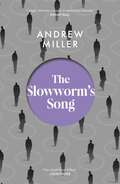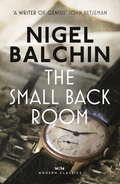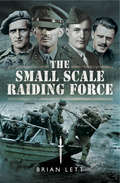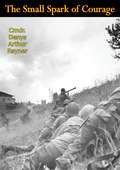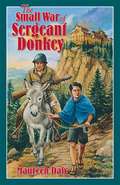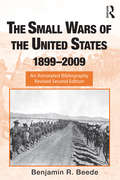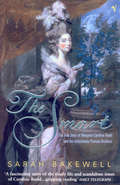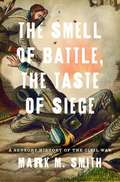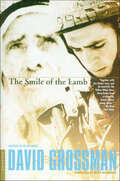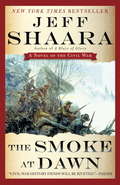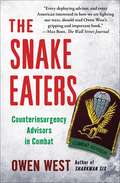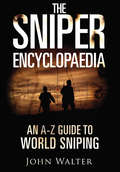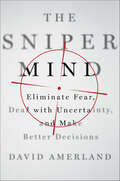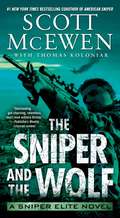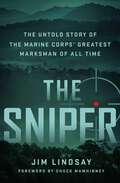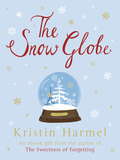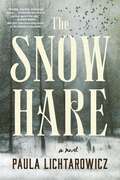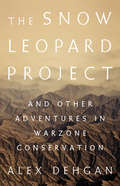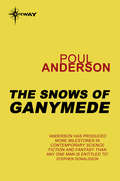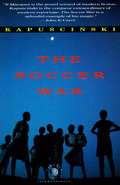- Table View
- List View
The Slowworm's Song
by Andrew Miller***Pre-order Andrew Miller's new novel THE LAND IN WINTER now - coming October 2024***'ANDREW MILLER'S WRITING IS A SOURCE OF WONDER AND DELIGHT' Hilary Mantel 'ONE OF OUR MOST SKILFUL CHRONICLERS OF THE HUMAN HEART AND MIND' Sunday Times'Sublime' Independent 'Masterful' Sunday Times 'Beautiful' Spectator A profound and tender tale of guilt, the search for atonement and the hard, uncertain work of loving from the critically acclaimed author of PureAn ex-soldier and recovering alcoholic living quietly in Somerset, Stephen Rose has just begun to form a bond with Maggie, the daughter he barely knows, when he receives a summons - to an inquiry in Belfast about an incident during the Troubles, which he hoped he had long outdistanced. Now, to testify about it could wreck his fragile relationship with Maggie. And if he loses her, he loses everything. He decides instead to write her an account of his life - a confession, a defence, a love letter. Also a means of buying time. But as time runs out, the day comes when he must face again what happened in that distant summer of 1982. PRAISE FOR ANDREW MILLER 'Unique, visionary, a master at unmasking humanity' Sarah Hall 'A writer of very rare and outstanding gifts' Independent on Sunday 'A highly intelligent writer, both exciting and contemplative' The Times 'A wonderful storyteller' Spectator
The Small Back Room
by Nigel BalchinA true modern classic, THE SMALL BACK ROOM is a towering novel of the Second World War.Sammy Rice is a weapons scientist, one of the 'back room boys' of the Second World War. A crippling disability has left him cynical and disillusioned - he struggles with a drink problem at home, and politics and petty pride at work. Worse still, he fears he is not good enough for the woman he loves.The stakes are raised when the enemy begin to drop a new type of booby-trapped bomb, causing many casualties. Only Sammy has the know-how to diffuse it - but as he comes face to face with real danger, all his old inadequacies return to haunt him.Can he, at last, prove his worth and put his demons to rest?
The Small Back Room
by Nigel BalchinA true modern classic, THE SMALL BACK ROOM is a towering novel of the Second World War.Sammy Rice is a weapons scientist, one of the 'back room boys' of the Second World War. A crippling disability has left him cynical and disillusioned - he struggles with a drink problem at home, and politics and petty pride at work. Worse still, he fears he is not good enough for the woman he loves.The stakes are raised when the enemy begin to drop a new type of booby-trapped bomb, causing many casualties. Only Sammy has the know-how to diffuse it - but as he comes face to face with real danger, all his old inadequacies return to haunt him.Can he, at last, prove his worth and put his demons to rest?
The Small Scale Raiding Force
by Brian LettThe Small Scale Raiding Force (SSRF) was formed in February 1942 by Gus March Phillips with Major General Gubbins SOE European chief's approval. March-Phillips and his Maid of Honor Force had just had complete success with their operation (POSTMASTER) off West Africa.Equipped with a specially adapted motor torpedo boat, the SSRF immediately started planning for operations. Op FROUDESLEY, with the aim of destroying the battleship Tirpitz ran into technical problems and was delayed but, in August and September, three daring cross Channel missions were successfully carried out without loss. The author describes these and the disastrous fourth operation (ACQUATINT) when all 10 SSRF men, including March-Phillips were killed or captured.Despite this hammerblow, SSRF now commanded by Geoffrey Appleyard made two raids on Sark a week later. Again their story is fully told in this fascinating book along with those of three further 1942 raids.Inter-service rivalry ('the war within') led to the break-up of the SSRF in early 1943. The Author describes the many colourful characters who made up this special force including Anders Lassen VC, Graham Hayes and Andre Desgranges, the Free Frenchman whom the Gestapo 'turned'.This superbly researched book lifts the veil on a little known but highly effective special force unit and the gallant individuals who served in it.As seen in Dorset Magazine.Book of the Month - Britain at War Magazine, April 2014
The Small Spark of Courage
by Cmdr. Denys Arthur RaynerTHEY KNEW THEY WOULD NOT RETURN…Having outrun their supply lines, they now await the enemy’s counterattack…In order to determine the enemy’s intention the brigade commander is compelled to expose one company to certain destruction. At the height of the battle, the commander of the ‘suicide’ company appeals for assistance to an armoured unit. Its young troop officer hesitates.Dare he disobey order to prevent a massacre?“It is a gem: the day-long battle is vastly exciting, words are not wasted. Effects are as sure as the characters. Commander Rayner has great writing talent.”—DAILY EXPRESS“In a tense series of battle scenes an unexpected and entirely unplanned victory is won. An exciting engagement which also provokes speculation about men in action and morale.”—BOOKS OF THE MONTH
The Small War of Sergeant Donkey (Living History Library)
by Maureen Daly Wesley DennisDonkeys by the hundreds! Twelve-year-old Chico Filippo, whose own donkeys were confiscated years before by the German army, can t stay away from the newly set up American Remount Depot. Here, in the last months of World War II in Italy, thousands of supply mules and donkeys are processed and sent onto the fierce mountain fighting in the Apennines. One of the handlers introduces Chico to a small courageous animal the boy names Sergeant Donkey. Drawn into friendship and then into unexpected danger, Chico must demonstrate his own simple courage. More than an animal or war story, this short book has a depth of truth about people of different ages and nationalities who still share a common love of the land and of human dignity. Age 8-up
The Small Wars of the United States, 1899-2009: An Annotated Bibliography (Routledge Research Guides to American Military Studies)
by Benjamin R. BeedeThe Small Wars of the United States, 1899–2009 is the complete bibliography of works on US military intervention and irregular warfare around the world, as well as efforts to quell insurgencies on behalf of American allies. The text covers conflicts from 1898 to present, with detailed annotations of selected sources. In this second edition, Benjamin R. Beede revises his seminal work, bringing it completely up to date, including entries on the current conflicts in Iraq and Afghanistan. An invaluable research tool, The Small Wars of the United States, 1899–2009 is a critical resource for students and scholars studying US military history.
The Smart
by Sarah BakewellThe Smart is a true drama of eighteenth-century life with a mercurial, mysterious heroine. Caroline is a young Irishwoman who runs off to marry a soldier, comes to London and slides into a glamorous life as a high-class prostitute, a great risk-taker, possessing a mesmerising appeal. In the early 1770s, she becomes involved with the intriguing Perreau twins, identical in looks but opposite in character, one a sober merchant, the other a raffish gambler. They begin forging bonds, living in increasing luxury until everything collapses like a house of cards - and forgery is a capital offence. A brilliantly researched and marvellously evocative history, The Smart is full of the life of London streets and shots through with enduring themes - sex, money, death and fame. It bridges the gap between aristocracy and underworld as eighteenth-century society is drawn into the most scandalous financial sting of the age.
The Smell of Battle, The Taste of Siege: A Sensory History of the Civil War
by Mark M. SmithHistorical accounts of major events have almost always relied upon what those who were there witnessed. Nowhere is this truer than in the nerve-shattering chaos of warfare, where sight seems to confer objective truth and acts as the basis of reconstruction. In The Smell of Battle, the Taste ofSiege, historian Mark M. Smith considers how all five senses, including sight, shaped the experience of the Civil War and thus its memory, exploring its full sensory impact on everyone from the soldiers on the field to the civilians waiting at home. From the eardrum-shattering barrage of shells announcing the outbreak of war at Fort Sumter; to the stench produced by the corpses lying in the mid-summer sun at Gettysburg; to the siege of Vicksburg, once a center of Southern culinary aesthetics and starved into submission, Smith recreates howCivil War was felt and lived. Relying on first-hand accounts, Smith focuses on specific senses, one for each event, offering a wholly new perspective. At Bull Run, the similarities between the colors of the Union and Confederate uniforms created concern over what later would be called "friendlyfire" and helped decide the outcome of the first major battle, simply because no one was quite sure they could believe their eyes. He evokes what it might have felt like to be in the HL Hunley submarine, in which eight men worked cheek by jowl in near-total darkness in a space 48 inches high, 42inches wide. Often argued to be the first "total war," the Civil War overwhelmed the senses because of its unprecedented nature and scope, rendering sight less reliable and, Smith shows, forcefully engaging the nonvisual senses. Sherman's March was little less than a full-blown assault on Southernsense and sensibility, leaving nothing untouched an no one unaffected. Unique, compelling, and fascinating, The Smell of Battle, The Taste of Siege, offers readers way to experience the Civil War with fresh eyes.
The Smile of the Lamb: A Novel
by David GrossmanIn a chorus of voices David Grossman's The Smile of the Lamb tells the story of Uri, an idealistic young Israeli soldier serving in an army unit in the small Palestinian village of Andal, in the occupied territories, and his relationship with Khilmi, a nearly blind old Palestinian storyteller. Gradually as the violent reality of the occupation that infects both the occupier and the occupied alike merges with the old man's stories, Uri, captivated by Khilmi's wisdom, tries to solve the riddles and deceits that make up his life.Originally published in Hebrew in 1983, The Smile of the Lamb is a novel of disillusionment and a piercing examination of injustice and dishonesty.
The Smoke at Dawn
by Jeff ShaaraNew York Times bestselling author Jeff Shaara returns to the Civil War terrain he knows so well, with the latest novel in the series that started with A Blaze of Glory and A Chain of Thunder. In The Smoke at Dawn, the last great push of the Army of the Cumberland sets the stage for a decisive confrontation at Chattanooga that could determine the outcome of the war. Summer, 1863. The Federal triumph at Vicksburg has secured complete control of the Mississippi River from the Confederacy, cementing the reputation of Ulysses S. Grant. Farther east, the Federal army under the command of William Rosecrans captures the crucial rail hub at Chattanooga. But Rosecrans is careless, and while pursuing the Confederates, the Federal forces are routed in north Georgia at Chickamauga Creek. Retreating in a panic back to Chattanooga, Rosecrans is pursued by the Confederate forces under General Braxton Bragg. Penned up, with their supply lines severed, the Federal army seems doomed to the same kind of defeat that plagued the Confederates at Vicksburg. But a disgusted Abraham Lincoln has seen enough of General Rosecrans. Ulysses Grant is elevated to command of the entire theater of the war, and immediately replaces Rosecrans with General George Thomas. Grant gathers an enormous force, including armies commanded by Joseph Hooker and Grant's friend, William T. Sherman. Grant's mission is clear: Break the Confederate siege and destroy Bragg's army. Meanwhile, Bragg wages war as much with his own subordinates as he does with the Federals, creating dissension and disharmony in the Southern ranks, erasing the Confederate army's superiority at exactly the wrong time. Blending evocative historical detail with searing depictions of battle, Jeff Shaara immerses readers in the world of commanders and common soldiers, civilians and statesmen. From the Union side come the voices of Generals Grant, William Tecumseh Sherman, and George Thomas--the vaunted "Rock of Chickamauga"--as well as the young private Fritz "Dutchie" Bauer. From the Rebel ranks come Generals Bragg, Patrick Cleburne, and James Longstreet, as well as the legendary cavalry commander, Nathan Bedford Forrest. A tale of history played out on a human scale in the grand Shaara tradition, The Smoke at Dawn vividly recreates the climactic months of the war in the West, when the fate of a divided nation truly hangs in the balance. Praise for Jeff Shaara's new Civil War series A Blaze of Glory "Brilliant . . . riveting . . . a work to be embraced."--Bookreporter "[An] exciting read . . . This novel is meticulously researched and brings a vivid reality to the historical events depicted."--Library Journal "Dynamic portrayals [of] Johnston, Grant and William Tecumseh Sherman."--The Wall Street Journal A Chain of Thunder "[A] riveting fictional narrative."--Booklist "Shaara continues to draw powerful novels from the bloody history of the Civil War. . . . [He] aptly reveals the main actors: Grant, stoic, driven, not given to micromanagement; Sherman, anxious, high-strung, engaged even when doubting Grant's strategy. . . . Worth a Civil War buff's attention."--Kirkus Reviews "Shaara's historical accuracy is faultless, and he tells a good story. . . . The voices of these people come across to the reader as poignantly clear as they did 150 years ago."--Historical Novels Review
The Smuggler’s Wife (The Smuggler’s Daughters #3)
by Evie GraceThe brand new novel from bestselling author Evie Grace, set amongst the Napoleonic Wars in the 1800s. Perfect for fans of Dilly Court and Poldark. _______________________KENT 1815 Her heart led her to him, but will loyalty be enough to make her stay . . .When the beautiful but naïve Grace Lennicker falls for Isaiah Feasey, son of a rival smuggling family and owner of a local tavern, her sisters try to intervene. But as tensions grow, there is another suitor also hoping to win her hand in marriage, the dashing and more favourable Albert Enderby, a young lieutenant in the Revenue.Grace is unwittingly drawn back into the world of smuggling that her sisters fought hard to leave behind, and as violence erupts, she finds herself unable to stand by, knowing the rival gangs will kill anyone who stands in their way. When her husband becomes involved, Grace is forced to make a difficult decision - turn him in and risk her life, or stay loyal and risk the lives of those she loves . . .Praise for Evie Grace'Intriguing' Val Wood'A charming historical read that hits all the right notes' Woman's Weekly'Heart-tugging saga of which Catherine Cookson would've approved' Peterborough Evening Telegraph
The Snake Eaters
by Owen WestWHEN A DOZEN UNPREPARED AMERICAN ARMY RESERVISTS ARE DROPPED OFF on an isolated Iraqi outpost with orders to be its military advisors, they have no idea that what they will really be doing is fighting. With no training to fall back on, this group--including a guitarist, a DEA agent, a plumber, and a postal worker--must somehow mentor the "Snake Eaters," an Iraqi battalion locked in a deadly struggle over an insurgent-infested town along the Euphrates River. They are plunged into complex counterinsurgent warfare side by side with their Iraqi charges, soon discovering that at such close quarters moral standards are inevitably blurred. The battle becomes so personal that the combatants know each other's names, faces, and especially the families caught in the middle. Owen West, a third-generation U.S. Marine, tells the gripping, boots-on-the-ground story of the remarkable American and Iraqi troops who for two years fought the insurgency street by street and house by house in the poisonous city of Khalidiya, Iraq. The American advisors were a ramshackle group of Army reservists, Marines, and National Guardsmen with little support or understanding from the higher ranks. The Iraqi battalion they were assigned was from the very first both amateurish and hostile. In a town where the people they were trying to protect were indistinguishable from the enemy they were trying to kill--and few locals ever told the truth--it seemed like a mission doomed to failure. But with courage, infinite patience, and a sense of duty few outsiders understood, the young American and Iraqi soldiers on patrol learned to work with each other and with the townspeople, winning their trust and revealing war as a series of human acts. From Major Mohammed, the Snake Eater who garners the most respect from the Americans precisely because he likes them the least, to the bighearted Staff Sergeant Blakley, a medic stalked by a sniper, the heroic soldiers in these pages are as complex as their war. By the end of the mission, the Snake Eaters was the first Iraqi battalion granted independent battle space, the insurgency was wiped off the streets of Khalidiya, and peace was restored. A rare success story to emerge from the war, West's exceptional book is as instructive as it is impossible to put down. Owen West is donating his net proceeds from The Snake Eaters to the Marine Corps Scholarship Foundation and to the families of fallen advisors and fallen Iraqi "Snake Eaters."
The Snake Eaters: Counterinsurgency Advisors in Combat
by Owen WestWHEN A DOZEN UNPREPARED AMERICAN ARMY RESERVISTS ARE DROPPED OFF on an isolated Iraqi outpost with orders to be its military advisors, they have no idea that what they will really be doing is fighting. With no training to fall back on, this group--including a guitarist, a DEA agent, a plumber, and a postal worker--must somehow mentor the "Snake Eaters," an Iraqi battalion locked in a deadly struggle over an insurgent-infested town along the Euphrates River. They are plunged into complex counterinsurgent warfare side by side with their Iraqi charges, soon discovering that at such close quarters moral standards are inevitably blurred. The battle becomes so personal that the combatants know each other's names, faces, and especially the families caught in the middle. Owen West, a third-generation U.S. Marine, tells the gripping, boots-on-the-ground story of the remarkable American and Iraqi troops who for two years fought the insurgency street by street and house by house in the poisonous city of Khalidiya, Iraq. The American advisors were a ramshackle group of Army reservists, Marines, and National Guardsmen with little support or understanding from the higher ranks. The Iraqi battalion they were assigned was from the very first both amateurish and hostile. In a town where the people they were trying to protect were indistinguishable from the enemy they were trying to kill--and few locals ever told the truth--it seemed like a mission doomed to failure. But with courage, infinite patience, and a sense of duty few outsiders understood, the young American and Iraqi soldiers on patrol learned to work with each other and with the townspeople, winning their trust and revealing war as a series of human acts. From Major Mohammed, the Snake Eater who garners the most respect from the Americans precisely because he likes them the least, to the bighearted Staff Sergeant Blakley, a medic stalked by a sniper, the heroic soldiers in these pages are as complex as their war. By the end of the mission, the Snake Eaters was the first Iraqi battalion granted independent battle space, the insurgency was wiped off the streets of Khalidiya, and peace was restored. A rare success story to emerge from the war, West's exceptional book is as instructive as it is impossible to put down. Owen West is donating his net proceeds from The Snake Eaters to the Marine Corps Scholarship Foundation and to the families of fallen advisors and fallen Iraqi "Snake Eaters."
The Sniper Encyclopaedia: An A-Z Guide to World Sniping
by John WalterThe Sniper Encyclopaedia is an indispensable alphabetical, topic-by-topic guide to a fascinating subject.It is intended as a companion volume to John Walter's Snipers at War (Greenhill Books, 2017) and is another addition to the Greenhill Sniper Library which includes a series of first-person memoirs.This is a comprehensive work that covers virtually every aspect of sniping. The work contains personal details of hundreds of snipers, including world-renowned gurus such as Vasiliy Zaytsev and Chris Kyle as well as many crack shots generally overlooked by history. Among them are some of more than a thousand Red Army snipers, men and a surprising number of women, who amassed sufficient kills to be awarded the Medal for Courage and, later, the Order of Glory. Some of the best-known victims of snipers are identified, and the veracity of some of the most popular myths is explored.The book pays special attention to the history and development of the many specialist sniper rifles - some more successful than others - that have served the world&’s armies since the American Wars of the nineteenth century to today&’s technology-based conflicts. Attention, too, is paid to the progress made with ammunition—without which, of course, precision shooting would be impossible and the development of aids and accessories, from camouflage clothing to laser rangefinders.Finally, The Sniper Encyclopaedia examines place and specific campaigns - the way marksman have influenced the course of the individual battles and locations which have played a crucial part in the history of sniping, from individual sites to sniper schools and training grounds.The book contains authors&’ biographies, a critical assessment of the many books and memoirs from the world of the sniper, and a guide to research techniques.
The Sniper Encyclopaedia: An A-Z Guide to World Sniping
by John WalterThe Sniper Encyclopaedia is an indispensable alphabetical, topic-by-topic guide to a fascinating subject.It is intended as a companion volume to John Walter's Snipers at War (Greenhill Books, 2017) and is another addition to the Greenhill Sniper Library which includes a series of first-person memoirs.This is a comprehensive work that covers virtually every aspect of sniping. The work contains personal details of hundreds of snipers, including world-renowned gurus such as Vasiliy Zaytsev and Chris Kyle as well as many crack shots generally overlooked by history. Among them are some of more than a thousand Red Army snipers, men and a surprising number of women, who amassed sufficient kills to be awarded the Medal for Courage and, later, the Order of Glory. Some of the best-known victims of snipers are identified, and the veracity of some of the most popular myths is explored.The book pays special attention to the history and development of the many specialist sniper rifles - some more successful than others - that have served the world&’s armies since the American Wars of the nineteenth century to today&’s technology-based conflicts. Attention, too, is paid to the progress made with ammunition—without which, of course, precision shooting would be impossible and the development of aids and accessories, from camouflage clothing to laser rangefinders.Finally, The Sniper Encyclopaedia examines place and specific campaigns - the way marksman have influenced the course of the individual battles and locations which have played a crucial part in the history of sniping, from individual sites to sniper schools and training grounds.The book contains authors&’ biographies, a critical assessment of the many books and memoirs from the world of the sniper, and a guide to research techniques.
The Sniper Encyclopaedia: An A–Z Guide to World Sniping
by John WalterThe Sniper Encyclopaedia is an indispensable alphabetical, topic-by-topic guide to a fascinating subject. This is a comprehensive work that covers virtually any aspect of sniping. The work contains personal details of hundreds of snipers, including not only the best-known — world renowned gurus such as Vasiliy Zaytsev and Chris Kyle — but also many crack shots overlooked by history. Among them are some of more than a thousand Red Army snipers — men and a surprising number of women, who amassed sufficient kills to be awarded the Medal for Courage and, later, the Order of Glory. Some of the best-known victims of snipers are identified, and the veracity of the most popular myths is explored. The book pays special attention to the history and development of the many specialist sniper rifles — some more successful than others — that have served the world’s armies since the American Wars of the nineteenth century to today’s technology-based conflicts. Attention, too, is paid to the progress made with ammunition — without which, of course, precision shooting would be impossible. The development of aids and accessories, from camouflage clothing to laser rangefinders, is also considered. Finally, The Sniper Encyclopaedia examines significant locations and specific campaigns — the way marksman have influenced the course of the individual battles and places which have played a crucial part in the history of sniping, from individual sites to sniper schools and training grounds. The book contains authors’ biographies, a critical assessment of the many books and memoirs on the world of the sniper, and a guide to research techniques.
The Sniper Mind: Eliminate Fear, Deal with Uncertainty, and Make Better Decisions
by David AmerlandThe Sniper Mind from David Amerland is the first book to examine the learned skills necessary to become a sniper and teach readers how to apply those skills in business and in life.Snipers are exceptional. The trained sniper is a complex fusion of hard skills such as weapons knowledge, situational awareness, knowledge of ballistics and physics, and soft skills such as emotional stability, empathy, and a stoic acceptance of the hardships associated with a particular set of circumstances. There are countless instances where a single sniper, embarking on a secret mission, would have to improvise, operate beyond any hope of support, and yet still manage to carry out the mission and get back home unharmed even though the enemy was actively hunting him.For the first time ever, The Sniper Mind reveals the practical steps that allow a sniper’s brain to work in this superhuman precise, calculated way. It teaches readers how to understand and apply these steps, whether they are stuck in a cubicle facing mounting piles of work or sitting in a corner office making industry-defining decisions.Through the explanation of advanced military training techniques and cutting-edge neuroscience, David Amerland's book provides concrete strategies and real-world skills that can help us be better:-At our jobs -In our relationships-In our executive decision making -In the paths we choose to take through lifeBy learning how snipers teach their minds to eliminate fears and deal with uncertainty we can also develop the mental toughness we need to achieve the goals that seem to elude us in business as well as in life.
The Sniper and the Wolf: A Sniper Elite Novel (Sniper Elite #3)
by Thomas Koloniar Scott McEwenNavy SEAL sniper Gil Shannon comes face-to-face with his most dangerous adversary yet in the breathtakingly cinematic new Sniper Elite military thriller from the coauthor of the #1 New York Times bestseller American Sniper—the critically acclaimed memoir of Chris Kyle that inspired the Academy Award-winning film.Hot on the trail of a high-profile target, Navy SEAL sniper Gil Shannon turns from hunter to hunted when he finds himself in the crosshairs of Chechen terrorist “The Wolf.” Stranded in Paris, Shannon must team up with an unlikely ally—a deadly Russian special operative—to help even the odds. When they discover that “The Wolf” is just one of many sinister players in a global terrorist plot bent on thrusting the US economy into total chaos and upending the stability of the Western world, Shannon and his team race to track down the terrorists before they can execute their horrific plan. In a white-knuckle adventure across Europe and the Caucasus, Shannon goes head-to-head with legions of enemy fighters, but his ultimate showdown is against the one sniper who may be his equal shot. Who will survive?
The Sniper: The Untold Story of the Marine Corps' Greatest Marksman of All Time
by Jim LindsayJim Lindsay's The Sniper reveals, for the first time ever, the full story of the deadliest sniper in Marine Corps history, Chuck Mawhinney, who served in the Vietnam war at age 18—written with his full cooperation and participation.Charles "Chuck" Mawhinney is a United States Marine who holds the Corps' record for the most confirmed sniper kills (and the second most of any US service member in history), having recorded 103 confirmed kills in 16 months during the Vietnam War. He was also the youngest—killing the enemy as a teenager.In 1967, at the age of 18, Mawhinney joined the Marines and began his assent from recruit to the Marine Corps’ deadliest sniper. During his tours—in one of the most dangerous war zones of Vietnam—his character and charisma helped him deal with life and death in a hell hole with other young men a long way from home.After Vietnam, Mawhinney married and settled into his post-war life, raised a family, and was content that no one knew of his accomplishments in war. Then in 1991 he was startled and dismayed when outed by a fellow Marine sniper, Joseph Ward, who spoke of Mawhinney’s number of kills in his book, Dear Mom. Newspapers picked up the story and Mawhinney’s life changed forever. The notoriety troubled him at first, but then he accepted the fame and used the opportunity to train service men and lawmen in the art of long-distance shooting.At last, Chuck's full story is told, including his heroic exploits in battle and the terrible toll that taking a life exerts on a human being.
The Snow Globe
by Kristin HarmelChristmas Eve, 1942, Paris. A boy stands beneath the statue of Liberte in the Jardin du Luxembourg, awash in a flurry of snowflakes, on the eve of his sixteenth birthday. Time is running out - the curfew means he needs to get home, this is a dangerous time to be on the streets. But then he catches sight of a young girl called Rose, and his fate is sealed... The Snow Globe is a beautiful Christmas short story to complement the wonderful novel The Sweetness of Forgetting, also available from Quercus.
The Snow Hare: A Novel
by Paula LichtarowiczIn this "riveting, heartfelt" novel of love and consequences (Heather Morris, New York Times bestselling author of The Tattooist of Auschwitz), a woman dreams of becoming a doctor until World War II leads her instead into an astonishing love—and a fateful choice.Is it possible to fall in love at the edge of life? Lena has lived a long, quiet life on her farm in Wales, alongside her husband and child. But as her end approaches, buried memories begin to return. Of her childhood in Poland, and her passion for science. Of the early days of her marriage, reluctant wife to an army officer. Of the birth of her daughter, whose arrival changed everything. Memories less welcome return, too. Her Polish village, transformed overnight by the Soviets, and the war that doomed her entire family to the frigid work camps of the Siberian tundra. And buried in that blinding snow, amongst the darkness of survival, the most haunting memory of all: that of an extraordinary new love. Exploring motherhood, marriage, consequences, and our incredible human capacity for hope, The Snow Hare is the story of a woman who dares to love and to dream in the face of impossible odds, and of the peace we each must make with our choices, even long after the years have gone by.
The Snow Leopard Project: And Other Adventures in Warzone Conservation
by Alex DehganThe remarkable story of the heroic effort to save and preserve Afghanistan's wildlife-and a culture that derives immense pride and a sense of national identity from its natural landscape.Postwar Afghanistan is fragile, volatile, and perilous. It is also a place of extraordinary beauty. Evolutionary biologist Alex Dehgan arrived in the country in 2006 to build the Wildlife Conservation Society's Afghanistan Program, and preserve and protect Afghanistan's unique and extraordinary environment, which had been decimated after decades of war.Conservation, it turned out, provided a common bond between Alex's team and the people of Afghanistan. His international team worked unarmed in some of the most dangerous places in the country-places so remote that winding roads would abruptly disappear, and travel was on foot, yak, or mule. In The Snow Leopard Project, Dehgan takes readers along with him on his adventure as his team helps create the country's first national park, completes the some of the first extensive wildlife surveys in thirty years, and works to stop the poaching of the country's iconic endangered animals, including the elusive snow leopard. In doing so, they help restore a part of Afghan identity that is ineffably tied to the land itself.
The Snows of Ganymede: Psychotechnic League Book 2 (PSYCHOTECHNIC LEAGUE)
by Poul AndersonWhen the Order of Planetary Engineers sent Hall Davenant to Ganymede for a terraforming survey, they knew that the job on the airless, frigid Jovian moon would be tough. Changing it to resemble Earth - with fertile land, water and good air - was the biggest and most important planet conversion job ever attempted by the Engineers. But they hadn't counted on the already too Earthlike behaviour of the Ganymede colonists, who had never altered the ancient Earth-born habits of intrigue, bigotry and double-dyed treachery!
The Soccer War
by Ryszard KapuscinskiPart diary and part reportage, The Soccer War is a remarkable chronicle of war in the late twentieth century. Between 1958 and 1980, working primarily for the Polish Press Agency, Kapuscinski covered twenty-seven revolutions and coups in Africa, Latin America, and the Middle East. Here, with characteristic cogency and emotional immediacy, he recounts the stories behind his official press dispatches--searing firsthand accounts of the frightening, grotesque, and comically absurd aspects of life during war. The Soccer War is a singular work of journalism.
